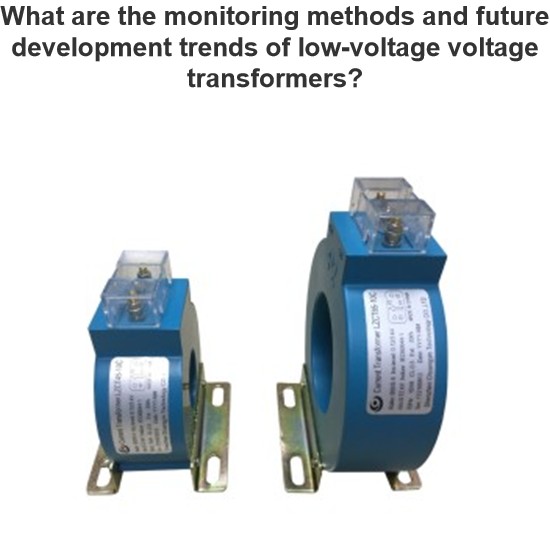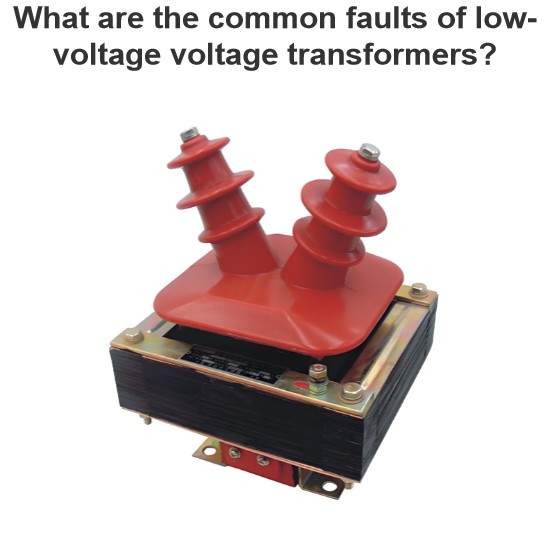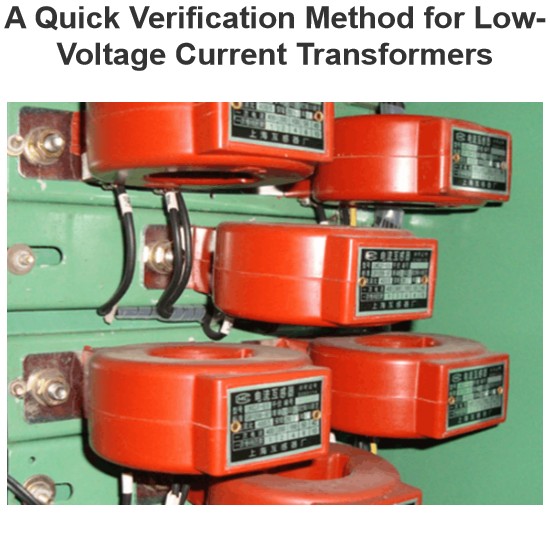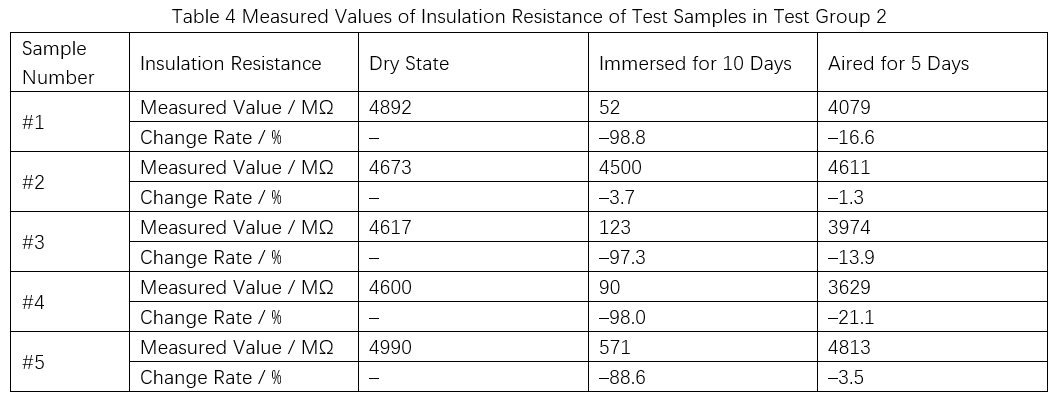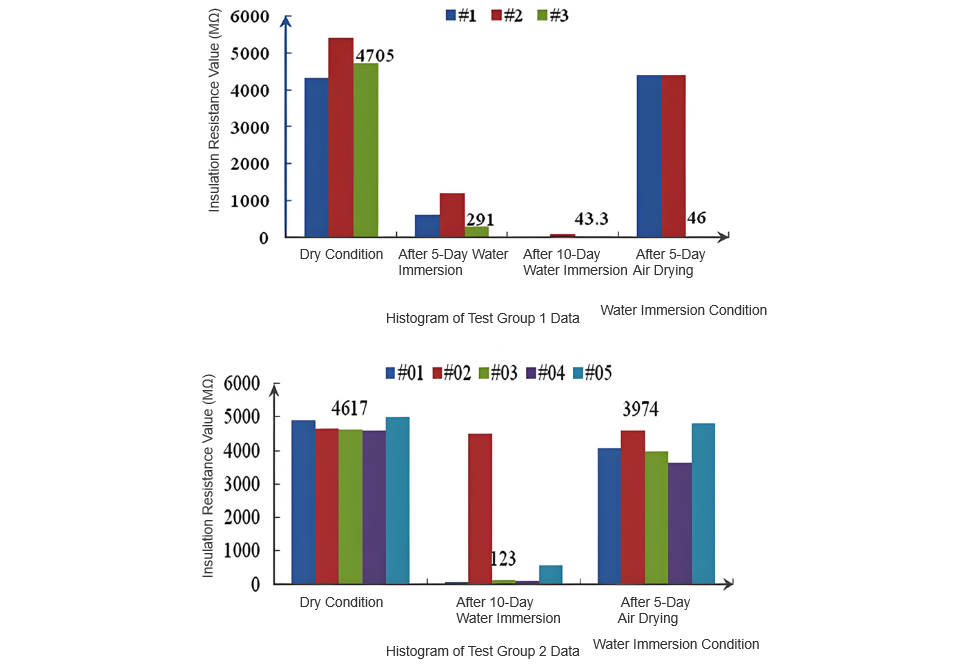In the first group of tests, 3 test samples from the same manufacturer were placed into the diving test equipment. Tap water was injected, with the liquid level height being 1000 mm and the water temperature at 15 °C. After being immersed in water for 5 days, they were taken out. The water droplets on them were wiped off with a dry cloth, and they were left to stand for 15 minutes. After drying, tests were carried out. Subsequently, tests were conducted once every day for 10 days. Finally, they were aired at room temperature for 5 days, and tests were performed again after air - drying. For the second group of tests, the sample size was increased. Test samples from 5 randomly selected manufacturers were directly immersed in water for 10 days, then aired for 5 days, and tested again after air - drying.
3.4 Test Data
3.4.1 Insulation Resistance
The insulation resistance was measured using the 500V DC voltage range. The insulation resistance values (partial) of the two groups of tests are shown in Table 3 and Table 4.
The #3 test sample had the largest insulation resistance change rate. After being immersed in water for 10 days, the insulation resistance was 43.3 MΩ. After being aired for 5 days, the insulation resistance was 46.0 MΩ, and the change rate reached - 99%. After the immersion test and drying, the insulation resistances of the remaining 7 test samples all recovered to the order of magnitude of the insulation resistance in the initial dry state.
3.4.2 Power - frequency Withstand Voltage
There were a total of 8 test samples in the two groups of tests before and after. Among them, 7 passed the power - frequency withstand voltage test. Only the #3 test sample had difficulty in voltage boosting during the test, and a very obvious discharge sound could be heard. After the test, obvious water traces were found inside the joint between the bottom plate and the epoxy resin of the #3 test sample. There was an obvious gap at the pouring interface of the bottom plate resin of this test sample. The bottom plate of the test sample after the test is shown in Figure 1. In a wet environment with water immersion, external moisture enters the inside of the main body through the gap and cannot be discharged, resulting in a reduction in the insulation level.
3.4.3 Basic Error
Error tests were conducted on 8 test samples both before and after immersion. Taking test sample #3 as an example, the error test data are shown in Table 5.
4 Test Analysis
Low - voltage current transformers mainly consist of insulating materials, iron cores, and windings. They use a casting process: epoxy resin, silicon micropowder, toughening agents, accelerators, and curing agents are mixed in specified proportions, stirred evenly, and injected into molds under certain conditions for solidification.
4.1 Insulation Resistance
Figure 2 is a histogram of insulation resistance data distribution of current transformers in different test groups. Most tested transformers show consistent insulation resistance changes after immersion and drying: a significant initial drop during immersion, then a rise back to the original dry - state order of magnitude after drying. Only test sample #3 has a - 99% insulation resistance change rate after drying, close to the 30 MΩ qualified critical value.
For Test Group 2 samples, insulation resistance changes vary after immersion. #01, #03, #04, #05 drop to the critical value; #02 remains almost unchanged. After 5 - day drying, they mostly return to the original resistance level, showing #02 has excellent insulation casting quality with no water penetration after long - term immersion.
Temperature (negligible here) and humidity affect insulation resistance. Humidity changes greatly pre - and post - test. Normally, surface resistivity drops while volume resistivity stays. But if the insulating material has low water resistance or casting defects, the main insulation medium absorbs water. Even after drying, internal water hardly evaporates. Surface resistivity recovers, but volume resistivity plummets irrecoverably, lowering overall insulation resistance.
4.2 Power Frequency Withstand Voltage
Epoxy resin - insulated low - voltage current transformers have a large insulation margin. Normally, surface moisture doesn’t cause surface discharge, and they pass the power frequency withstand voltage test after immersion and drying.
However, tiny pores in the insulation medium let water molecules enter after immersion, forming water - filled micropores and turning the solid dielectric into a solid - liquid composite. Water in micropores polarizes and deforms under the electric field, changing from spherical to ellipsoidal, connecting channels and reducing breakdown field strength. More water and denser channels with longer immersion increase breakdown risk. Air gaps in casting also let water in. These factors cause discharge sounds during withstand voltage, as seen in test sample #3.
4.3 Basic Error
A transformer’s error depends only on the core’s magnetic properties and winding parameters. Pre - and post - immersion, the core’s excitation characteristics and winding impedance stay unchanged, and test data show minimal basic error variation.
Immersion tests also revealed:
- 75% (6 out of 8) of secondary terminal screw washers rusted.
- 50% (4 samples) showed resin color bleaching (originally Red Brown No. 3, lightened significantly).
5 Quality Supervision Suggestions
To avoid severe insulation failure after immersion amid frequent extreme weather, suggestions include:
- Strengthen manufacturing oversight: Use high - waterproof epoxy composites; enforce strict casting process standards to prevent surface gaps/inner air bubbles.
- Add immersion tests for transformers in rainy/low - lying areas during full - performance and sampling inspections.
- Build non - destructive testing (X - ray) capabilities to analyze internal medium changes post - immersion, pushing suppliers to improve processes.
- Incorporate immersion test requirements into technical standards, especially for special - use transformers.
- Collaborate with leading manufacturers to develop high - waterproof metering transformers.
6 Conclusions
This study addresses quality assessment of epoxy - insulated low - voltage current transformers after heavy rain immersion. Key findings:
- Post - immersion, insulation resistance usually drops sharply but mostly recovers after drying. Samples with insulation resistance < 100 MΩ should be retired.
- Immersion barely affects basic error.
- Immersed transformers require re - testing; only qualified units can remain in use.
- Immersion tests help detect casting defects.
These results guide power companies and manufacturers in assessing/reusing long - immersed transformers.

